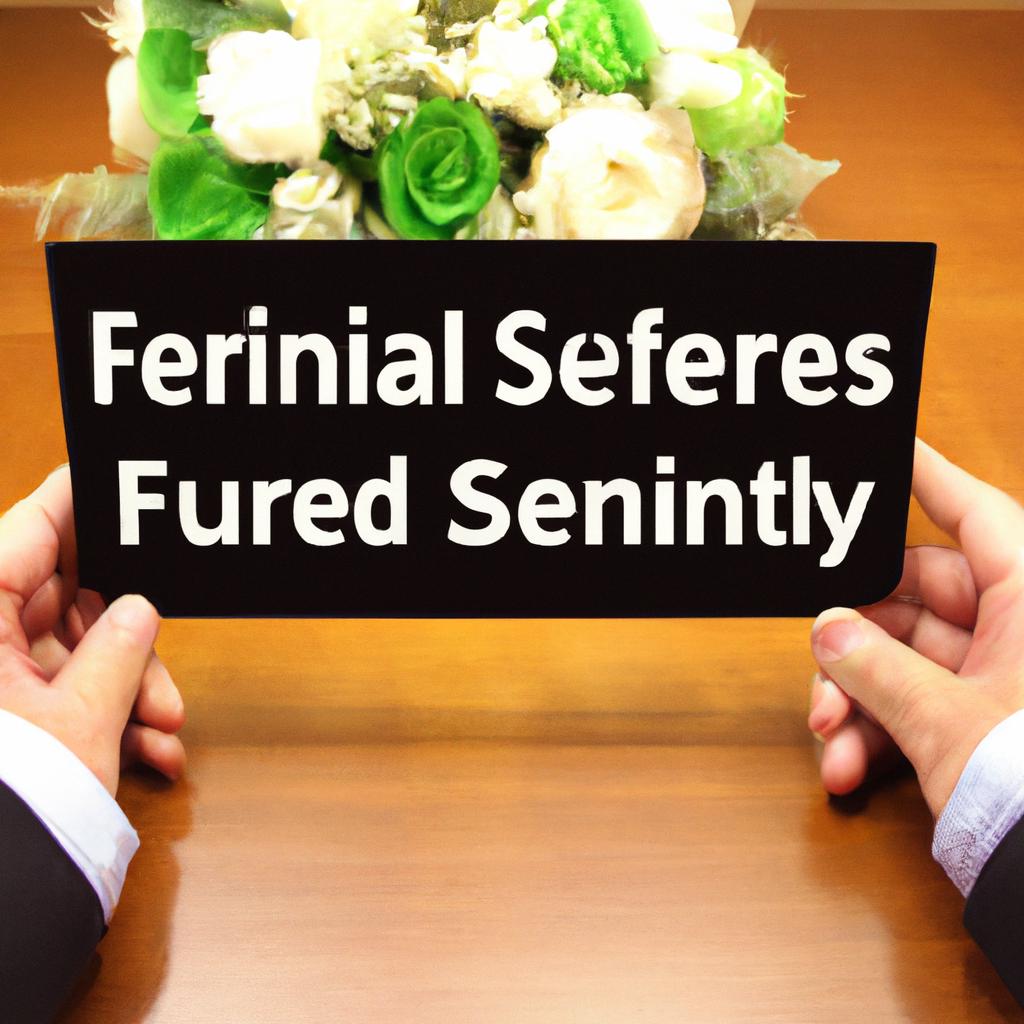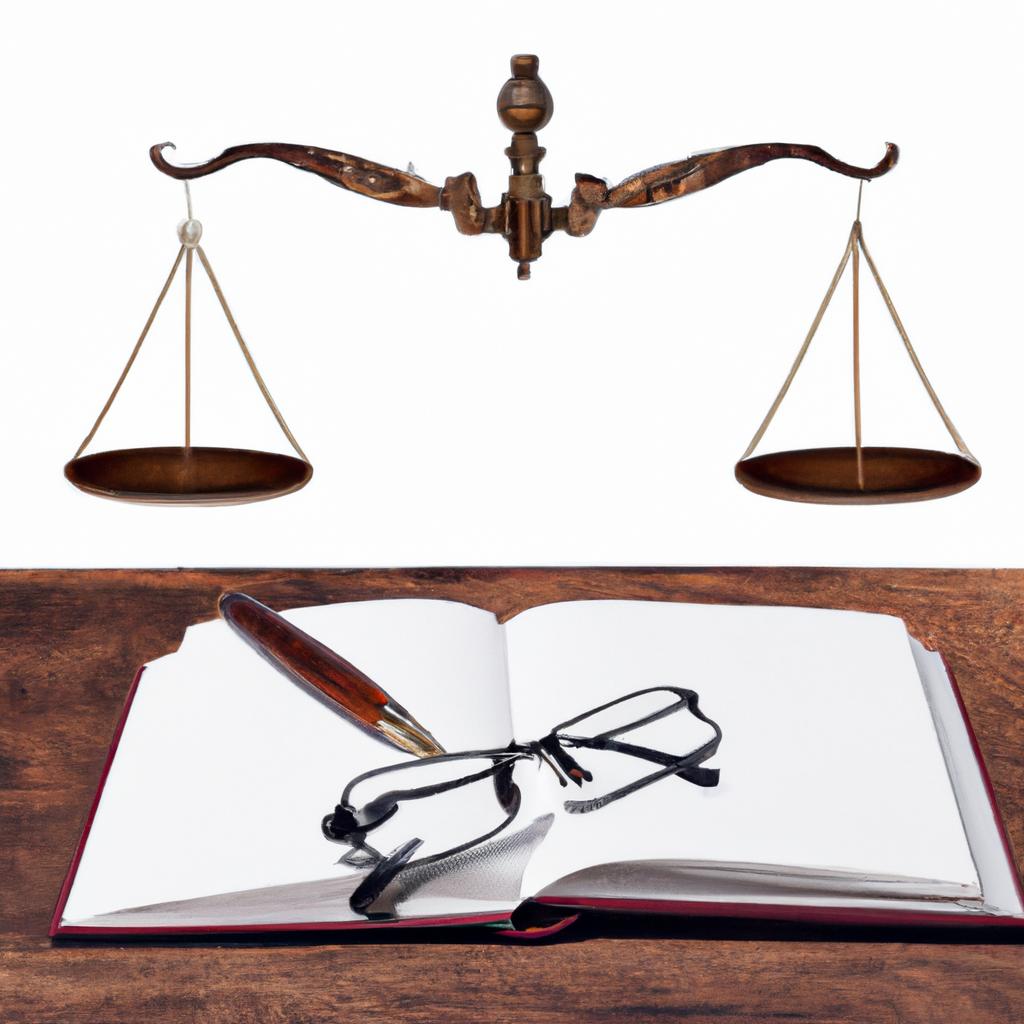In the intricate web of legal matters surrounding end-of-life planning, funerals stand as a crucial and intricate component. As experienced legal professionals at Morgan Legal Group in New York City, we understand the importance of providing guidance and clarity in navigating the complexities of funeral arrangements. In this article, we delve into the essential steps and considerations for ensuring a dignified and legally compliant funeral. From understanding funeral laws to selecting a reputable funeral home, let us guide you through the process with precision and expertise.
Arranging a Dignified Funeral Ceremony
When , it is essential to consider various factors to ensure a respectful and memorable event. One of the first steps is to determine the wishes of the deceased or their loved ones regarding the type of funeral they prefer. This may include choosing between a traditional burial, cremation, or other alternative options.
Next, it is important to select a reputable funeral home that can assist with all the necessary arrangements, including transporting the body, preparing for the ceremony, and coordinating with clergy or officiants. Additionally, organizing a reception or gathering after the funeral can provide an opportunity for friends and family to offer their condolences and support each other during this difficult time. By carefully planning each aspect of the funeral ceremony, you can ensure a dignified and respectful farewell for your loved one.

Navigating Legal Procedures and Requirements
When it comes to for organizing a funeral, there are several important steps to keep in mind. First and foremost, it is crucial to obtain a death certificate from the relevant authorities. This document is essential for various legal purposes, including notifying government agencies, financial institutions, and insurance companies of the deceased’s passing. Additionally, it is important to make arrangements with a funeral home to handle the deceased’s body and plan the funeral service.
Next, it is important to consider any specific wishes or requests the deceased may have had regarding their funeral arrangements. This may include preferences for burial or cremation, specific religious or cultural customs to be observed, or instructions for the disposition of their remains. Communicating these wishes to the funeral home and ensuring they are carried out can help ensure that the funeral service reflects the deceased’s desires and provides a meaningful way for loved ones to remember and honor them. At Morgan Legal Group, we understand the complexities of surrounding funerals and are here to provide guidance and support during this difficult time.
| Legal Steps | Details |
|---|---|
| Obtain Death Certificate | Essential for legal purposes |
| Make Funeral Arrangements | Work with a funeral home to plan services |
| Consider Deceased’s Wishes | Respect and honor any specific preferences |

Selecting the Right Funeral Services Provider
When it comes to , there are a few key factors to consider. First and foremost, it’s important to choose a provider that offers a range of services to suit your specific needs and preferences. Whether you’re looking for a traditional burial or a more contemporary cremation service, make sure the provider you choose can accommodate your wishes.
Another important consideration when selecting a funeral services provider is the reputation and experience of the company. Look for a provider with a proven track record of professionalism and integrity, as well as positive reviews from satisfied customers. Lastly, don’t forget to consider the cost of the services offered. While you want to honor your loved one’s memory with a respectful and meaningful service, it’s also important to find a provider that fits within your budget.

Honoring the Deceased with Personalized Tributes
When it comes to , there are several key elements to consider in planning a funeral. First and foremost, it is important to reflect on the life of the departed and what made them unique. Personalized tributes can include special readings, music, photos, and stories that capture the essence of the individual. Creating a memorable and meaningful service can provide comfort to loved ones and pay homage to the life that was lived.
Additionally, incorporating personal touches such as customized decorations, keepsakes, and mementos can further personalize the funeral experience. Family members can also share anecdotes and memories during the service to celebrate the life of their loved one. Ultimately, the goal of personalized tributes is to honor the memory of the deceased in a way that is special and meaningful to those who knew them best.
Q&A
Q: Why is it important to have a funeral for a loved one?
A: a funeral provides a time and space for family and friends to come together to mourn, remember, and celebrate the life of the deceased.
Q: What are some common elements of a funeral service?
A: common elements of a funeral service are prayers, eulogies, readings, music, and a final committal ceremony.
Q: Is it necessary to have a religious officiant for a funeral?
A: while many funerals are officiated by a religious leader, it is not necessary to have one if the family prefers a secular or non-traditional service.
Q: What are some alternative options for a funeral service?
A: some alternative options for a funeral service include a celebration of life ceremony, a graveside service, or a virtual ceremony for those unable to attend in person.
Q: How can one personalize a funeral to honor the deceased?
A: personalizing a funeral can be done by incorporating the deceased’s favorite music, hobbies, or interests into the service, creating a memory table, or displaying photos and mementos.
Q: What is the etiquette for attending a funeral?
A: when attending a funeral, it is important to dress appropriately, offer condolences to the family, and follow the lead of the funeral director or officiant during the service.
Q: What should one consider when planning a funeral?
A: when planning a funeral, one should consider the wishes of the deceased, the preferences of the family, budget constraints, and any cultural or religious customs that should be observed.
Closing Remarks
As we draw this guide on how to have a funeral to a close, it is important to remember that the process of saying goodbye to a loved one is never easy. However, by carefully planning and preparing for the event, you can ensure that the funeral serves as a meaningful tribute to the life that was lived. From choosing the right venue to selecting the appropriate readings and music, every detail plays a part in creating a memorable farewell. As you navigate through this difficult time, remember to lean on your loved ones for support and allow yourself to grieve in your own way. Ultimately, a funeral is a time to honor the memory of the departed and celebrate the impact they had on those around them. May you find solace in the shared experience of saying goodbye, and may the memories you hold dear bring you comfort in the days ahead.
 When a loved one passes away, it can be a devastating and emotional experience for all those involved. Along with dealing with the grief and loss, there are also practical matters that need to be taken care of, and one of the most important is planning a funeral. While it may seem like a daunting task, having a funeral is an essential part of the grieving process and honors the life of the deceased. In this article, we will provide a comprehensive guide on how to have a funeral, covering everything from the initial steps to the post-funeral arrangements.
When a loved one passes away, it can be a devastating and emotional experience for all those involved. Along with dealing with the grief and loss, there are also practical matters that need to be taken care of, and one of the most important is planning a funeral. While it may seem like a daunting task, having a funeral is an essential part of the grieving process and honors the life of the deceased. In this article, we will provide a comprehensive guide on how to have a funeral, covering everything from the initial steps to the post-funeral arrangements.
Step 1: Determine the Type of Funeral
The first step in having a funeral is deciding the type of service you want to have. There are various options, such as a traditional burial, cremation, grave-side service, or celebration of life ceremony. This decision often depends on the personal and religious preferences of the deceased and their loved ones. Additionally, budget and location can also be factors in deciding the type of funeral. A traditional burial and a celebration of life ceremony can be more costly, while cremation and a grave-side service may be more affordable alternatives.
Step 2: Contact a Funeral Home or Director
After deciding on the type of funeral, the next step is to contact a funeral home or director. They are experienced in handling funeral arrangements and can guide you through the process. They will also assist in obtaining relevant documentation such as death certificates and cremation permits. Depending on the location, some funeral homes may require a burial or cremation permit from the local government, which the funeral director can help obtain.
Step 3: Gather Important Information
Before meeting with the funeral director, gather information such as the deceased’s full name, date of birth, social security number, and any special requests for the funeral. This information will be needed for the death certificate and other necessary documents. You can also provide the funeral director with a list of family members and friends to notify about the funeral arrangements.
Step 4: Making Arrangements
During your meeting with the funeral director, you will discuss various arrangements, such as the date and time of the service, casket or urn selection, and flower arrangements. If the deceased did not have any pre-planned arrangements, the funeral director can also help with the selection of an appropriate cemetery or crematorium. They can also assist in organizing a clergy member or celebrant to lead the service. It is also advisable to discuss any cultural or religious customs that should be incorporated into the funeral service.
Step 5: Invitations and Announcements
After finalizing the details of the funeral, the next step is to inform family and friends. Traditional methods include written invitations, phone calls, or emails. However, in today’s digital age, you can also use social media or online platforms to announce the funeral arrangements. It is essential to note that not everyone may check their social media regularly, so it’s important to use multiple methods of communication to ensure everyone is notified.
Step 6: Prepare the Venue
On the day of the funeral, make sure the venue is ready for the service. This can involve setting up flower arrangements and decorations, ensuring the sound system is working, and providing a guest book for attendees to sign. If there is a reception or gathering after the service, make sure any food and drinks are arranged, and necessary transportation is available.
Step 7: The Funeral Service
During the funeral service, various rituals and traditions may be observed, depending on the religion or cultural customs. The funeral director and the clergy member or celebrant will guide the attendees through the service. It is also common for family and friends to share stories and memories of the deceased during the service, which can help with the grieving process and honoring the individual’s life.
Step 8: Post-Funeral Arrangements
After the service, there are still some post-funeral arrangements that need to be taken care of. This includes thanking attendees for their support, sending thank you notes, and finalizing any financial arrangements with the funeral home. Additionally, if the deceased was cremated, you can either scatter their ashes in a location of their choosing or keep them in an urn as a memorial. For a traditional burial, a headstone or marker may need to be ordered and placed at the grave-site.
In conclusion, planning a funeral is a crucial step in the grieving process and a meaningful way to honor the life of a loved one who has passed away. By following the steps outlined in this article, you can ensure that the funeral arrangements are handled smoothly and respectfully. Remember to lean on family and friends for support during this difficult time and seek professional help if needed. As the saying goes, “a funeral is not a day in a lifetime, it’s a lifetime in a day.”










